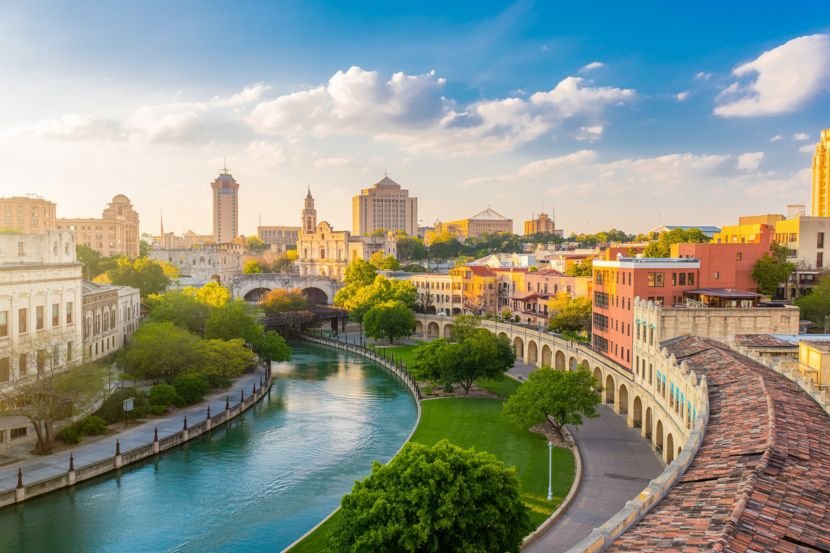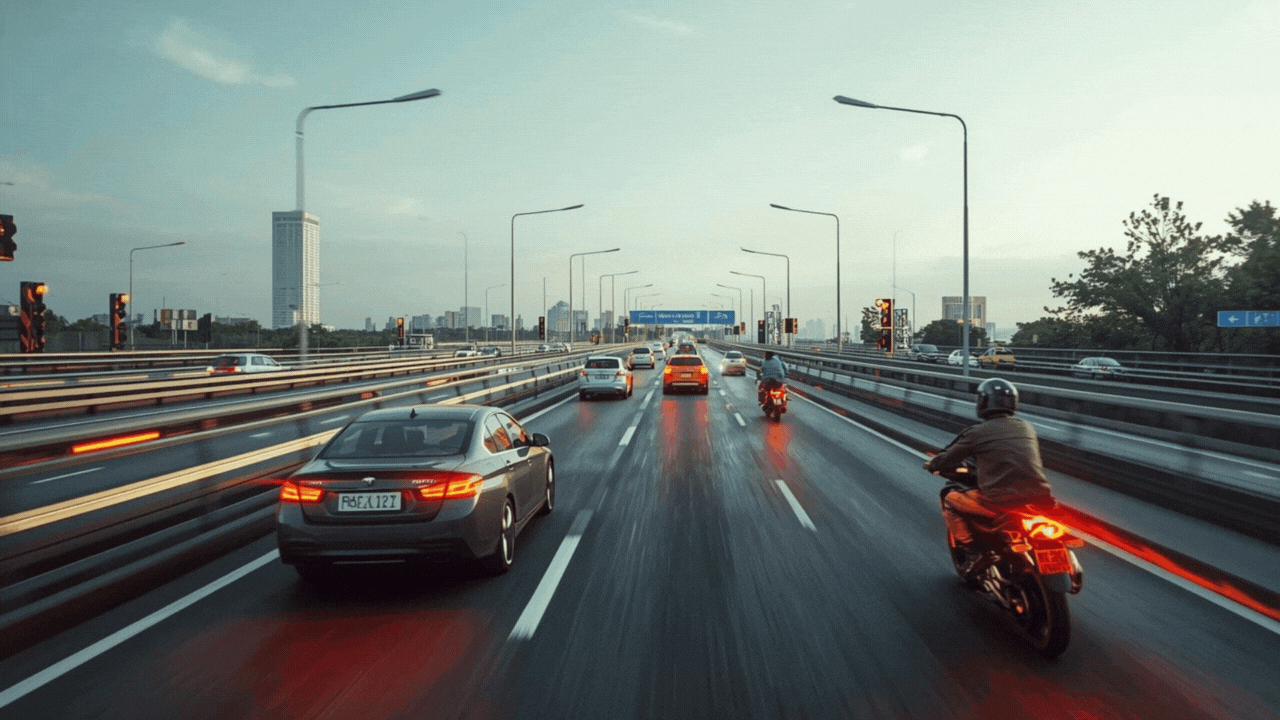Travel Guides & Articles
San Antonio Shines As One Of The Most Accessible US Cities For All Travellers

Published on
August 18, 2025
San Antonio, Texas, has attained the distinguished designation of one of the most accessible cities in the United States, an achievement reflecting the determination of local stakeholders and the expectations of travellers with diverse needs. This recognition arrives within the context of the city’s sustained growth as a premier American travel destination, where celebrated cuisine, upscale lodging, and a rich tapestry of cultural events have each generated international acclaim. The award underscores that the commitment to inclusion now complements the city’s other celebrated attributes, guaranteeing that every visitor regardless of mobility, vision, hearing, or other considerations can fully experience the iconic sites and distinctive ambiance that define San Antonio.
Efforts to Enhance Accessibility in San Antonio
A recent study by Wander, a luxury vacation home rental platform, highlighted San Antonio as one of the most accessible cities for travellers with varying needs. The study, which analysed several factors, including wheelchair-accessible attractions, walkability, reliable public transport, and internet connectivity, placed San Antonio in the top ten most accessible US cities. The city scored eight point nine one out of ten, sharing tenth place with San Francisco, showcasing its substantial improvements in ensuring a more inclusive tourism experience.
The study used data from the Bureau of Transportation Statistics and the Federal Transit Administration to rank cities on accessibility. San Antonio’s commitment to creating a welcoming environment for all travellers is not new. The city has long worked to eliminate architectural barriers, with a particular focus on the River Walk, one of its most iconic attractions. Since the 1980s, the city has worked toward improving access to the River Walk, ensuring that travellers with disabilities can navigate the area with ease.
San Antonio’s Commitment to Improving Access
San Antonio’s tourism infrastructure has evolved with the goal of meeting the needs of all visitors. In recent years, the city has made significant strides in removing architectural barriers, particularly along the River Walk. The initiative has resulted in the removal of more than fifty barriers, enhancing the accessibility of the area. These improvements have made it easier for wheelchair users and travellers with other mobility challenges to experience the beauty of one of the city’s most beloved attractions.
The city has also made notable progress in increasing walkability and accessibility to other key tourist spots, with enhanced public transportation systems and improved infrastructure across the city. Efforts include more accessible hotel accommodations, improved signage for tourists with disabilities, and better access to public transit options.
San Antonio and Its Role in Accessible Tourism
San Antonio’s position as one of the top 10 accessible destinations in the US reflects broader trends in the tourism industry, where inclusivity is becoming an increasingly important factor in attracting travellers. As one of the largest tourist cities in Texas, San Antonio continues to pave the way for other cities to prioritise accessibility. The city’s ongoing work ensures that travellers of all abilities can explore its historic landmarks, enjoy local culture, and experience its renowned hospitality.
The Importance of Accessible Tourism for All Travellers
Accessibility in tourism has gained significant attention in recent years as more travellers with unique needs seek out destinations that can cater to their requirements. Cities that are proactive in making their attractions, transportation, and accommodations accessible are increasingly recognised for their commitment to inclusivity. For San Antonio, this recognition not only boosts its reputation as a leading US destination but also contributes to its overall tourism economy.
San Antonio’s Tourism Impact
An increasing number of travelers identify accessibility as a key factor in destination choice, placing cities such as San Antonio in a favorable position to attract this growing market. San Antonio’s strategic investments in inclusive tourism complement global movements toward greater equity in travel, thereby widening its appeal. The city’s rich tapestry of historic sites, diverse cultural offerings, celebrated cuisine, and well-designed mobility options positions it as a leading choice for visitors with an array of needs. Persistent enhancements in physical, digital, and service accessibility allow San Antonio to evolve continually, ensuring that every guest enjoys a remarkably cohesive travel narrative.
Through its sustained commitment to universal design and customer-centric service, the city models a viable, inclusive tourism economy for its peers. San Antonio demonstrates that the travel sector can flourish without exclusion and that every market segment rightly deserves a seat at the cultural table.
Travel Guides & Articles
Breaking News Live Updates: IndiGo airline issues travel advisory for Leh, asks passengers to rebook or claim refunds

Orange weather warning for NCR
The India Meteorological Department (IMD) upgraded its weather warning to orange across Delhi and the National Capital Region, urging residents to prepare for heavy showers. Officials said the rainfall was being driven by the monsoon in combination with an unusually active western disturbance, which has also brought downpours to Himalayan states.
Temperatures dropped to 24–25 degrees Celsius, but the fall in mercury did little to ease the problems caused by clogged roads and flooding. Commuters were seen navigating waist-deep water in parts of the city, while pedestrians struggled to move through submerged streets.
Gurugram faces intense rainfall
Gurugram was hit hardest. Between 3 pm and 7 pm, the city received over 100 mm of rain. Stretches near Hero Honda Chowk, Patel Nagar and Signature Bridge were completely inundated. The service lane of the Dwarka Expressway had to be shut as water levels rose sharply, and the expressway’s drainage system collapsed under pressure.
By 6 pm, more than 90 mm of rainfall had been recorded, leaving vehicles stranded and traffic backed up at the Delhi-Gurugram border along National Highway-8. The downpour, which lasted for hours, paralysed key roads connecting Dwarka to Kherki Daula and several sectors of Gurugram.
Work from home and online classes advised
The District Disaster Management Authority (DDMA) asked private offices and institutions to shift to remote work on Tuesday. It also directed schools to move to online classes. In its advisory, the Gurgaon deputy commissioner said the order aimed to reduce traffic jams, ensure public safety, and minimise disruption after the city received over 100 mm of rain in just five hours.
The circular, sent late on Monday to the District Information and Public Relations Office, also tasked education officers with ensuring full compliance by both government and private schools.
Officials urged residents to stay indoors as much as possible and avoid unnecessary travel. They advised those who needed to step out to follow weather updates closely. Emergency services were placed on standby while authorities continued to assess the situation.
Rain impact across Delhi
Several parts of Delhi, including Akbar Road near India Gate, were pounded by rain. While waterlogging was less severe than in Gurugram, traffic slowed to a crawl during the evening rush as people left their offices.
Authorities confirmed that traffic restrictions on Loha Pul were necessary to prevent risks from the swelling Yamuna.
Travel Guides & Articles
Which Indian Cities Are The Most Dangerous for Road Travel? Check Top 5 in 2023 Report | India News

India’s Most Dangerous Cities for Road Travel: Top 2 Cities Saw a Combined 1,731 Deaths in Just One Year (representational)
India’s roads continue to claim hundreds of lives every year, with certain cities standing out for the sheer scale of fatalities. Delhi, Bengaluru, Jaipur, and Ahmedabad have emerged as the deadliest for motorists, with speeding and reckless driving cited as the leading causes.
In 2023, Ahmedabad recorded 535 deaths due to road accidents, placing it among India’s most dangerous cities for motorists, according to a TOI report. Alarmingly, 462 of these fatalities—nearly 86%—occurred on straight roads, highlighting a disturbing trend. Officials say this is due to the city’s long, open stretches and relatively fewer blind curves, which encourage drivers to overspeed. SG Highway, dotted with bridges, has been identified as a significant contributor to the high toll.
“Speeding over the limit and reckless driving are cited as the main culprits,” officials noted.
Accidents on bridges formed the next major category, with 77 crashes claiming 41 lives—around 7% of the city’s total road deaths. The tragic Iskcon flyover accident, which killed nine people and injured 13, was the most high-profile case. Other unusual fatalities included one person falling into a pothole and two deaths on an under-construction road.
Controlled vs Uncontrolled Roads
The report also sheds light on where fatalities occur: 21 deaths were recorded on roads with traffic lights, 32 on stretches managed by police, and a staggering 205 on uncontrolled roads. This ranking puts Ahmedabad fifth nationwide in deaths on uncontrolled roads, behind Mumbai (336), Indore (258), Delhi (241), and Bengaluru (241).
Delhi tops the list with 938 fatalities, followed by Bengaluru with 793, and Jaipur with 718 deaths. Ahmedabad, with 535 road deaths, underscores the need for stricter enforcement and public awareness campaigns to curb reckless driving.
Travel Guides & Articles
When Digital Systems Don’t Travel

By Poorvi Yerrapureddy and Aditi Shah
The Karnataka Platform-Based Gig Work (Social Security and Welfare) Bill, 2025 has prompted fresh debates around the architecture of social protection in India. The legislation is historic in its recognition of platform labour, but the scope of the Bill remains narrow as India’s wider unorganised sector remains outside its ambit.
It is a step in the right direction, but its selective coverage exposes a larger systemic gap – India continues to lack a comprehensive framework that recognises mobility and precarity across the unorganised sector as a whole.
For decades, India’s social security provisions have excluded various groups of citizens. Today, however, the Government appears to commit to a more inclusive disbursement of such benefits. The e-Shram portal was launched in an effort to build a national database of unorganised workers, linking them to welfare entitlements via a unique ID. But in its current form, it functions more as a registry than an integrated delivery platform, with little capacity to link registrations to state-specific benefits. Unorganised workers in various parts of the country are being encouraged to register themselves on the online portal, which is touted as a one-stop shop for workers’ welfare entitlements.
Historically, the portability of social security benefits has not been a policy priority. These benefits are afforded to citizens in ways that assume that they are stationary. As a result, migrants who constitute 30% of India’s population – moving within, into, or out of states – are left out or find themselves lost in a bureaucratic maze.
Systems for welfare provision, housed across Central and State Governments, must account for the movement citizens engage in for a host of reasons, including for work or marriage. Advancing social security portability ensures that such movement is more easily facilitated, without citizens having to go to great lengths to procure benefits or giving up entirely. While the question of portability is picking up steam, targeted and intentional interventions must be realised for it to become a meaningful reality of our welfare systems.
Centre-State Coordination Is A Priority
In theory, portability is purported as the unparalleled promise of digital welfare reform – seamless, borderless, citizen-centric. Yet for India’s internal migrants, this promise often disintegrates at the very first point of contact. Structural challenges embedded within both the design and implementation of digital welfare systems render portability not just difficult, but implausible. When mobility is treated as an exception rather than a norm, entire populations fall through the cracks.
At the heart of the issue is the fragmented coordination between Central and State Governments. India’s welfare architecture resembles a federation of fiefdoms, each state retaining autonomy over eligibility norms, entitlements, and implementation protocols. Welfare schemes like One Nation One Ration Card (ONORC) and e-Shram rely on the assumption that a centrally maintained database will be adopted and operationalised uniformly across India. Migrants thus move through a patchwork of systems that interpret central schemes through local bureaucratic lenses.
Take e-Shram for instance: while the portal facilitates centralised registration of unorganised workers, it does not guarantee access to any specific benefit. Whether this data translates into actual entitlements depends on state agencies – many of which lack clear protocols or incentives to operationalise the registry.
In the context of the PDS, as well, migrants have historically had trouble receiving food security benefits, owing to linkages with Fair Price Shops that are closest to one’s home address. In the absence of shared benchmarks or portability safeguards, registration becomes symbolic rather than functional. What results is not true portability, but a form of welfare roulette – where access is governed by how a state chooses to act on the Centre’s promise rather than on citizen need.
Both within and across state boundaries, there need to be provisions for rendering welfare governance systems interoperable. Instead of submitting to extremes of total centralisation or irreconcilable fragmentation, states must securely share data with one another to the extent necessary.
A key bottleneck is the absence of common data standards or protocols that allow databases to communicate. But this is not merely a technical failure, as states often resist integration to retain autonomy over eligibility and entitlement delivery. Only when that changes are migrant populations likely to move without fear of losing access to the welfare services provided by government systems.
For interoperable systems to become a reality, it is important to look at how citizen data will be governed, and where the decision-making power will reside. Strict boundaries around the State and Central Governments’ duties and contributions must be recorded. Although State realisations of Central schemes speak better to localised citizen realities, they leave little room for transferability when citizens migrate.
Establishing a shared accountability framework that defines a common minimum core of entitlements across the country, while allowing states the flexibility to layer additional, context-specific benefits will be more pragmatic. Such a model ensures that migrant workers retain access to foundational welfare guarantees regardless of mobility, while respecting the political and economic autonomy of states. For portability to function meaningfully, clarity around what is Centrally guaranteed and how it is locally administered must be embedded in both data governance and policy design.
Redefining The Intermediary
Intermediaries have historically served as bridges between citizens and the state. ASHAs and Anganwadi workers have long translated opaque public healthcare and food schemes into navigable realities.
However, for India’s migrants this bridge is ephemeral: moulded and marauded through repeated movement. Intermediaries are rooted in place and bound by familiar community ties, whereas migrants are not. As people move, they detach from these relational anchors. What emerges is a double-bind: the state’s digital infrastructure lacks continuity, and the human layer that might compensate for it lacks mobility.
To continue aiding its adoption and trustworthiness for large groups of the Indian population, including internal migrants, human touchpoints remain crucial. While the management of moving intermediaries is a bureaucratic nightmare that is likely to yield sparse benefits for all stakeholders, there is merit in considering the employment of individuals across cities, towns, and villages that cater specifically to the needs of migrants.
Specialised training can be provided to these intermediaries who can then be stationed at Jan Seva Kendras (Public Service Centres) across the country. The power of having a person help another out is not to be underestimated, especially in a country like India, where even the migrant, in many ways isolated in their experience, is never too distanced from friendly faces.
Advertisements
Technical Barriers Breed Distrust
Issues of access and agency on the citizens’ end are further compounded by the difficulty of using government websites and other digital interfaces through which welfare-related information is provided or entitlements disbursed.
Technical barriers reveal flaws in how accessibility has been conceptualised; this includes biometric failures, inconsistencies in Aadhar linkages, and mobile-unfriendly interfaces which create additional layers of exclusion for citizens who may not possess adequate digital literacy.
Over time, repeated points of friction erode the faith that citizens have in the digital systems, creating trust fractures. A system built for efficiency ends up offloading its complexity to those least equipped to navigate it. When a migrant is denied rations because a fingerprint authentication is lagging, the issue is not technological, but existential.
Beyond being a design failure, this is a deeper mismatch between how state systems imagine the citizen and how a citizen actually moves through the state. Migrants challenge the very logic of place-based service delivery, yet our digital welfare infrastructure remains territorially tethered.
Government welfare platforms must be overhauled at various levels – from functioning in low-network areas to building comfort and safety through their visual design. For example, allowing multiple users to log in from the same device, or using reassuring language to communicate network-related delays can help build citizens’ trust in these platforms.
However, to build trust, we need more than technical fixes, we need a reimagination of digital systems as mobile and responsive to the temporality of migration. Until then, the idea of portability will remain a policy ideal more than a lived reality; an infrastructure that excludes precisely because it does not move with the people it was built for.
Welfare Systems Must Align With Migrant Realities
For too long, digital welfare has been built around administrative ease rather than citizen experience. The result is a disconnect between governance and the urgent, unpredictable realities of internal migration. A digital welfare system that moves with migrants cannot simply replicate static structures in digital form – it must be fundamentally reoriented to reflect the fluidity of migrant life.
Closing this gap means designing systems that are not just technically integrated, but also procedurally adaptable. They must address coordination failures, missing documentation and evolving identities over time. Digital welfare requires a shift in perspective: from building systems for people, to building systems with people on the move. Systems must evolve from asking “Do you qualify?” to “How do we keep you in?”.
One promising direction lies in reimagining verification not as a one-time gatekeeping mechanism, but as a continuum of trust-building. Building digital feedback loops, enabling grievance redressal in mobile contexts, and allowing migrants to track or contest decisions in real time can begin to close the accountability gap.
Some non-state actors, such as Haqdarshak, have attempted to bridge this gap by creating unified application layers for welfare access. Their success points to what government platforms can also achieve when designed with interoperability and mobility at the core.
Ultimately, aligning technology with migrant realities is not only about patching broken pipes in welfare delivery. It demands re-engineering the state’s digital infrastructure to remember movement not as an aberration, but as a central fact of life. Only then can digital welfare fulfil its inclusive mandate, not in principle, but in practice.
Also Read:
Aditi Shah works as the Manager at Aapti Institute: a research institution that aims to highlight Global South perspectives and challenges, while calibrating research to evolve stakeholders’ priorities.
Poorvi Yerrapureddy is a Senior Analyst at Aapti Institute.
Support our journalism:
For You
Source link
-

 Business4 days ago
Business4 days agoThe Guardian view on Trump and the Fed: independence is no substitute for accountability | Editorial
-
Tools & Platforms3 weeks ago
Building Trust in Military AI Starts with Opening the Black Box – War on the Rocks
-

 Ethics & Policy1 month ago
Ethics & Policy1 month agoSDAIA Supports Saudi Arabia’s Leadership in Shaping Global AI Ethics, Policy, and Research – وكالة الأنباء السعودية
-

 Events & Conferences3 months ago
Events & Conferences3 months agoJourney to 1000 models: Scaling Instagram’s recommendation system
-

 Jobs & Careers2 months ago
Jobs & Careers2 months agoMumbai-based Perplexity Alternative Has 60k+ Users Without Funding
-

 Funding & Business2 months ago
Funding & Business2 months agoKayak and Expedia race to build AI travel agents that turn social posts into itineraries
-

 Education2 months ago
Education2 months agoVEX Robotics launches AI-powered classroom robotics system
-

 Podcasts & Talks2 months ago
Podcasts & Talks2 months agoHappy 4th of July! 🎆 Made with Veo 3 in Gemini
-

 Education2 months ago
Education2 months agoAERDF highlights the latest PreK-12 discoveries and inventions
-

 Mergers & Acquisitions2 months ago
Mergers & Acquisitions2 months agoDonald Trump suggests US government review subsidies to Elon Musk’s companies

















